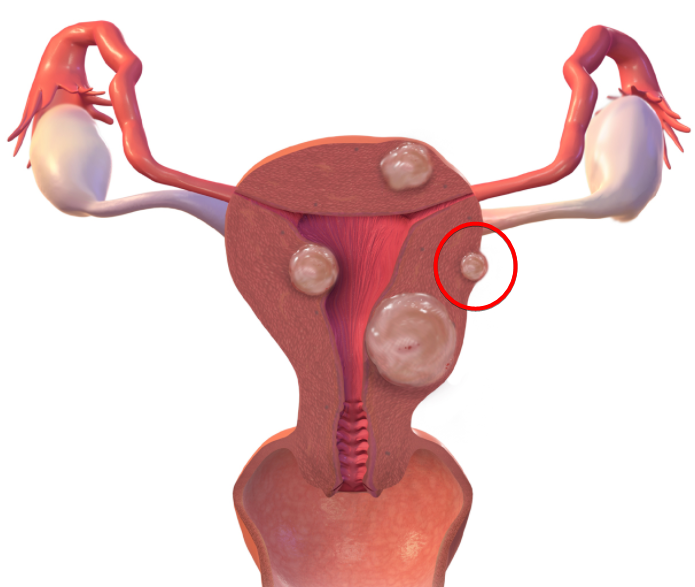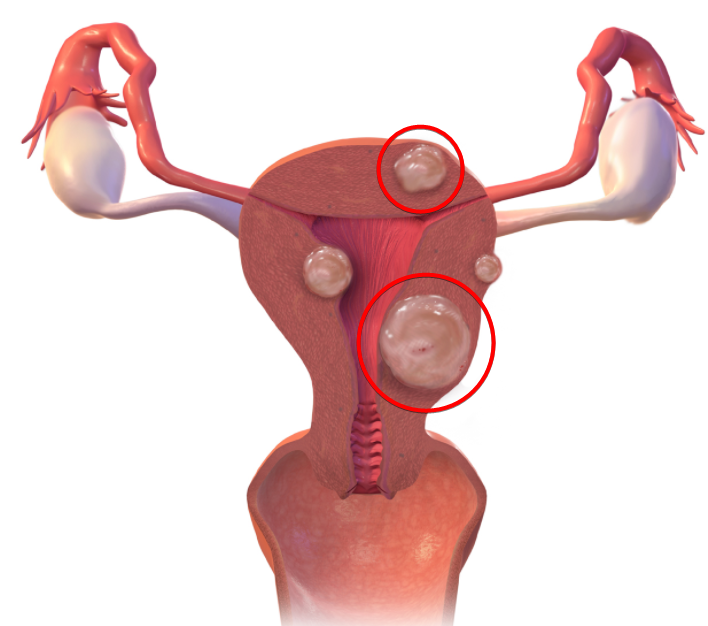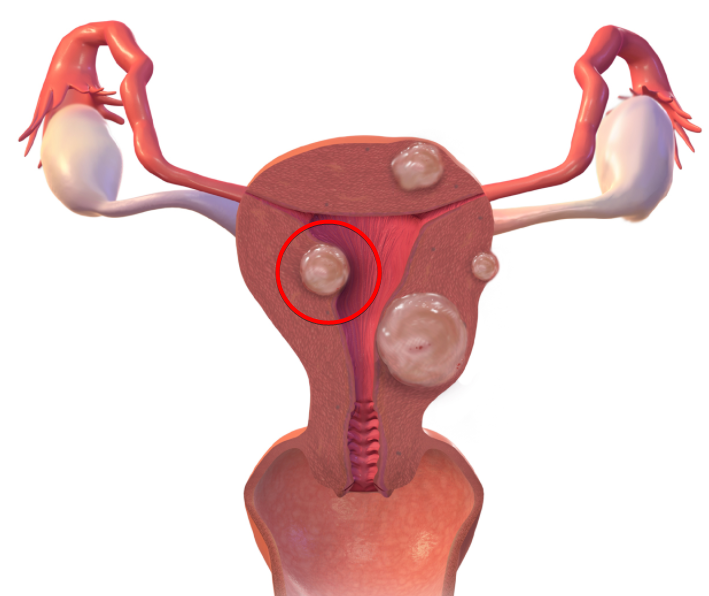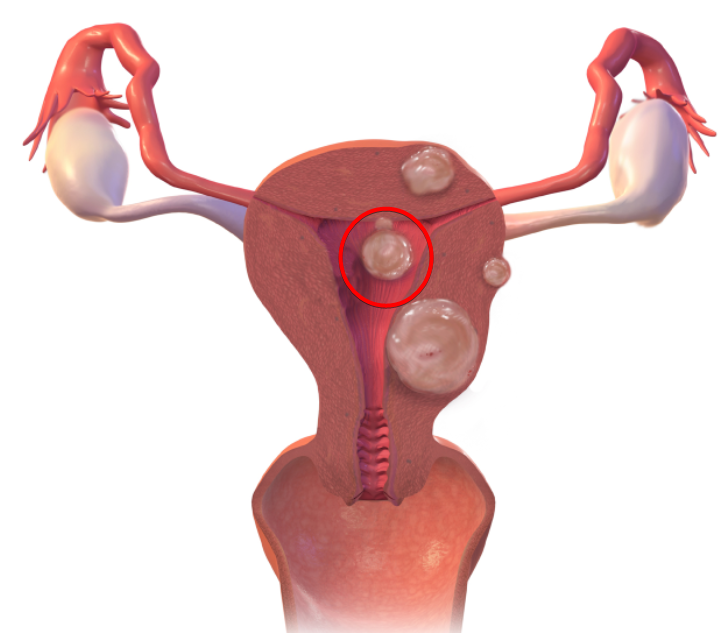Fibroids
Fibroids are the most common neoplasm in females with 50% prevalence. The most common complication is the large size requiring a hysterectomy. Originating from a single cell within the myometrium they can range from 1mm to 20cm in size. Estrogen therapy will usually increase their size while the opposite, menopause, will result in fibroid regression to some degree. Another factor that can increase fibroid size rapidly is sometimes pregnancy.
Classification
Classification can be done by location:
- Subserosal
- Intramural
- Submucosal
- Pedunculated submucosal
or by their histology:
- Mitotically active leiomyoma
- These fibroids have a high number of mitotic figures
- No malignancy risk
- Cellular leiomyoma
- Cellular fascicles make up these fibroids
- No malignancy risk
Symptoms
Abnormal vaginal bleeding or mild pelvic pressure/pain can be symptoms in some women, although most fibroids are asymptomatic.
Diagnosis
On bimanual exam, some of these fibroids can be palpated if they are large enough. Often times fibroids are diagnosed incidentally on U/S and over the long term can be monitored with U/S.
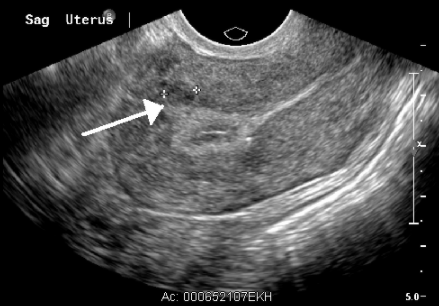
Management
Most common management is expectant given the benign nature of these tumours. Long-term follow-up can be done with a physical exam and U/S as discussed above. Some instances require medical or surgical intervention. These indications are the following:
- Large size causing pressure and pain symptoms
- Vaginal bleeding is excessive
- If the mass has characteristics of a sarcoma (leiomyosarcoma)
- The fibroid is causing obstructive nephrotic disease (hydronephrosis) by obstructing the ureters
- The fibroid is causing distortion of the uterus resulting in a potential problem for pregnancy in women who are contemplating getting pregnant
Medical management of excessive vaginal bleeding is done via the oral contraceptive pill (OCP) or Mirena (IUD). Sometimes GnRH agonists are used to induce medical menopause which will shrink fibroids. However, this is done for short periods of times in anticipation of surgical management.
Surgical management can be:
- Non-invasive surgery
- Uterine artery embolization
- Effective for fibroid caused bleeding
- The problem can sometimes return after some period
- Minimally invasive surgery
- Myomectomy for fibroids <4cm or for endometrial ablation
- Effective to control bleeding
- Laparotomy
- For very large or hard to reach fibroids
Endometrial polyps
Endometrial polyps are overgrowths of the endometrial layer of the uterus. The most common location for these is the fundus of the uterus. Although the majority of these are asymptomatic, some can cause uterine bleeding. Management can be done via hysteroscopic removal.
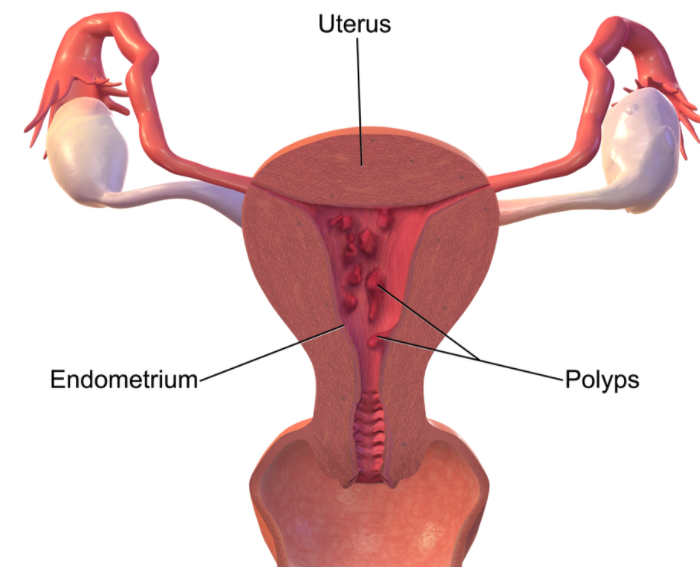
All information provided on this website is for educational purposes and does not constitute any medical advice. Please speak to you doctor before changing your diet, activity or medications.
